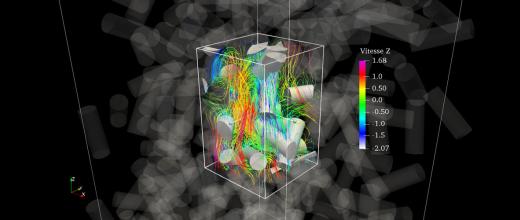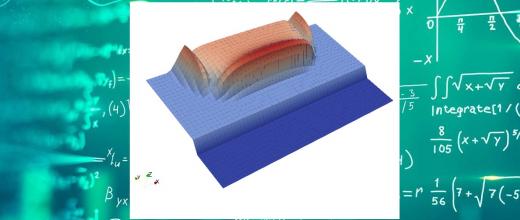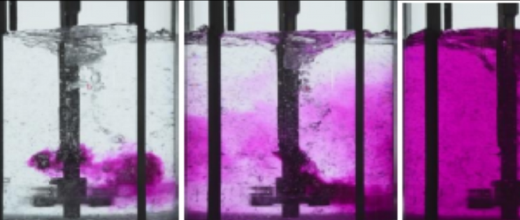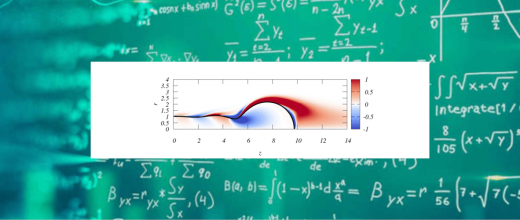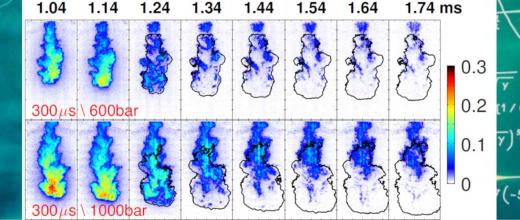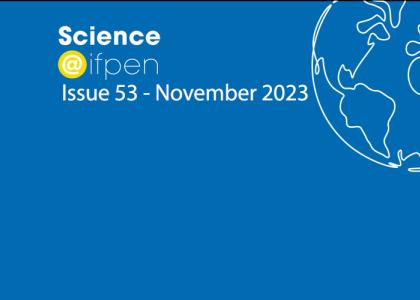
News in brief
Modeling wind turbine wake: a question of atmosphere!
In the wake zone located behind each wind turbine, wind velocity is reduced and turbulence increased. This results in a reduction in the lifespan of machines located downstream as well as a decrease in a windfarm’s overall electricity production. To limit these effects and help optimize the siting of turbines on windfarms, analytical wake models exist in the literature but they incorporate numerous simplifying hypotheses concerning wind turbines and their environment...
Individual page
Guillaume VINAY
Research Project Manager "Multiphysics Modeling of Coupling Phenomenon", PhD research engineer in numerical fluid mechanics
Guillaume Vinay studied at ENSEIRB-MATMECA in Bordeaux before completing a PhD in Numerical Mechanics at Mines ParisTech. Graduating in 2005, he was awarded the thesis prize of the Groupe Français de
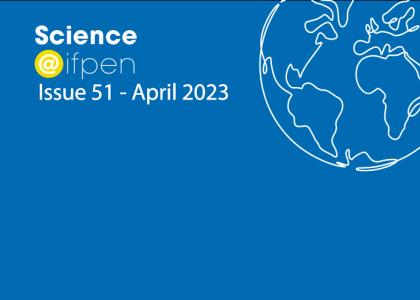
News in brief
SC8 - “Massively” accelerated windfarm simulation
In the field of wind energy, Large Eddy Simulations (LES) are widely used to gain a better understanding of wind flow within wind farms. On a wind farm scale, they are also used to establish analytical wake models, and are useful for studying the interactions between individual wind turbines as well as with the atmospheric boundary layer (ABL)...

News in brief
SC1 - New experimental set up to study battery safety
The electrification of mobility is a major transformation aimed at reducing greenhouse gas and pollutant emissions by the transport sector. In this context, the Li-ion battery is currently the technology employed by all car manufacturers to provide the energy storage required for the roll-out of electric vehicles...
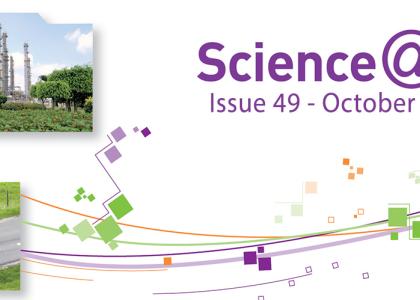
News in brief
Wind farm optimization: in the wake of modeling advances
Wind energy accounts for an increasing share of the energy mix thank to the construction of wind farms designed to reduce investment and operating costs. However, within a farm, downstream wind turbines are exposed to the wakes of upstream rotors, leading to a reduction in their production and an increase in their fatigue stresses...

News in brief
Coalescence and interfacial property: from the microscopic to the macroscopic
Numerous IFPEN applications, from liquid-liquid extraction for biofuel production to the flotation process for the separation of microplastics, bring into play interactions between a fluid and the large number of inclusions (bubbles, drops) it contains...

News in brief
A better description of turbulent flows for hydrogen powertrains
Within the framework of a global policy to reduce the emissions produced by the transport sector - particularly road transport - IFPEN is focusing on a complementary option along with vehicle electrification: the use of hydrogen powertrains. However, the use of hydrogen in IC engines first requires a comprehensive understanding of different phenomena, associated, for example, with interactions between the fuel and air...
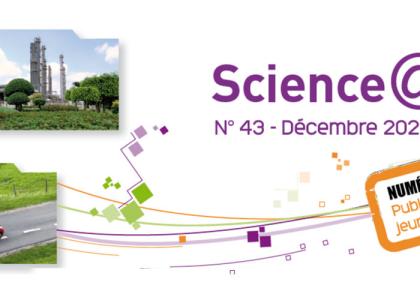
News in brief
A new numerical tool to simulate the interaction between wind farms and local meteorological conditions
The French long-term energy program is encouraging the growth of wind energy. In order to predict this energy production and attempt to optimize it, irrespective of the production site (sea, mountain), a better understanding of wind flow...

News in brief
Two-phase flow simulations: all regimes are now accessible
Numerous technological applications requiring the use of numerical simulation involve complex two phase flows, as is the case with the engine injection context. Most calculation software...
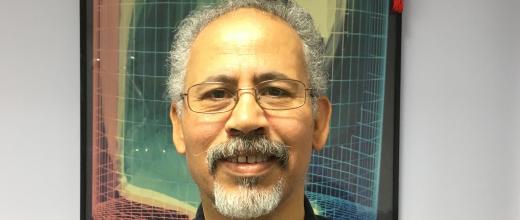
Individual page
Chaouki HABCHI
Senior Researcher
HDR-Associated with SMEMaG Doctoral School CentraleSupelec
HDR-Associated with SMEMaG Doctoral School CentraleSupelec
PhD from the Sorbonne University (PARIS-6) obtained in 1990 in the field of Computational Fluid Mechanics. HDR ( habilitation à diriger des recherches) from the Institut National Polytechnique de



